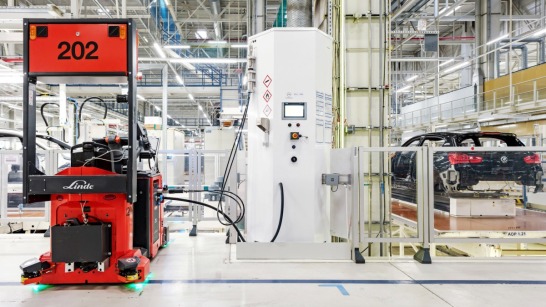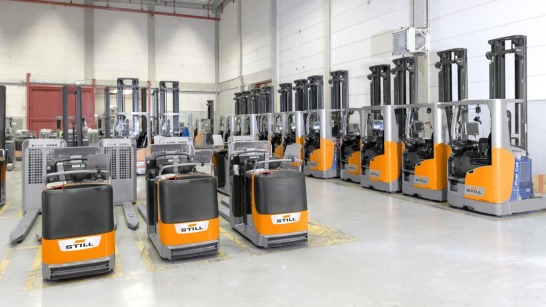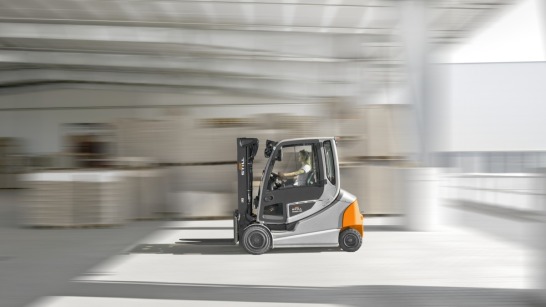The international headlines are a good indicator that hydrogen is gaining in importance as an alternative energy source. There are plans to build a massive hydrogen electrolysis facility in Hamburg while in China, the Yangtze River Delta Hydrogen Corridor project envisages the construction of hydrogen stations along highways so that fuel cell vehicles can also use them. And in Austria, a hydrogen electrolysis facility is scheduled to come on stream at some point this fall as part of a pilot project for carbon-neutral steel production. Efforts to become carbon neutral are changing the global economy and personal transport. Fuel cell technology is a crucial component and needs industry consideration. “In the future, fuel cells will be an important part of our energy strategy,” says Carsten Harnisch, the vice president of New Energy Systems at KION. The Group and its brands will be pooling their considerable expertise in fuel cell technology within his team, which also plans to focus its efforts on the development of lithium-ion technology.
Embracing new energy sources early on
The various brands at KION Group realized early on that hydrogen and fuel cell technology had a huge potential for intralogistics. “In 1997, we were the first to dedicate significant time and resources to this promising technology, and by 2010, we had the first trucks in full production. Linde MH offers the widest range of industrial trucks with fuel cell drives on today’s market. Around 80 percent of our models can be ordered with this advanced technology, including pallet trucks, tow tractors, reach trucks and counterbalance trucks such as the roadster model,” notes Markus Weinberger, an international product manager for Energy Solutions at Linde Material Handling.
The technology has also been a firm fixture for some time in Hamburg-based STILL’s portfolio. “We have been regularly running hydrogen projects involving a wide range of vehicle types since 2013 and the reasons are obvious: Our aim is to offer customers the best solution for their needs, and hydrogen-powered fuel cell technology has many advantages,” explains Björn Grünke, a product manager for Energy Systems at STILL.
Environmentally and financially attractive
Hydrogen fuel cells produce zero emissions during operation. Power is generated in a chemical reaction between oxygen and hydrogen, which feeds a compact lithium-ion battery. The battery then delivers power to the drive and lift motors. It is how a fuel cell generates the electrical energy needed to operate the vehicle directly on board. The only by-products of this ‘cold’ combustion are heat, steam and pure water, which is simply pumped out when refilling with hydrogen.
The refueling stops reveal the key benefit of fuel cell technology: within three minutes, the refill is completed. It keeps the down time that vehicles are out of service to a minimum thus increasing availability, which is crucial when it comes to tough, multi-shift operation. The process of refilling is also very safe and clean, making fuel cell drives a particularly attractive alternative to lead-acid batteries for industries where hygiene is critical, such as pharma and foodstuffs. There are also no toxic acids or other pollutants to deal with, which is a big plus when it comes to recycling. Also, the comparatively long lifespan of fuel cells – around five years depending on use – helps reduce unnecessary waste in the long term.
The only challenge for customers considering the switch to this sustainable technology is the high cost of investing in the necessary infrastructure, such as the hydrogen supply and refueling facilities. In certain instances, the investment is worth it. “Our research and practical tests show that fuel cell systems are economically viable from a fleet size of around 20 to 50 vehicles. If a company already has its own hydrogen infrastructure because it uses hydrogen in manufacturing, the concept becomes even more attractive financially,” says Weinberger, a fuel cell technology expert.


